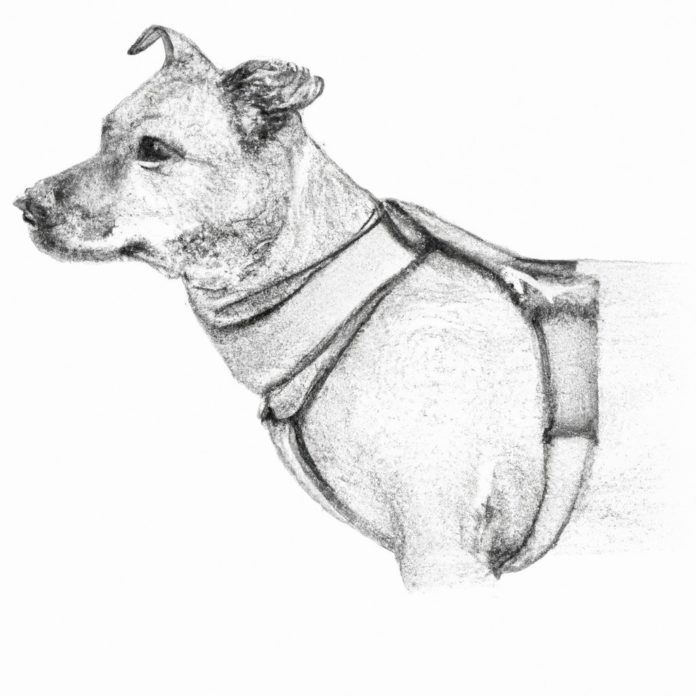Dear VetBabble,
How Can I Help My Dog After an Accident Involving a Jump and Landing on Her Shoulder/Chest Area?
Accidents can happen in the blink of an eye – one moment your dog is happily playing, and the next, they might’ve injured themselves by jumping off furniture and landing the wrong way. Like any concerned pet owner, you want to know what you can do to help your furry friend manage their pain and ensure their injury doesn’t worsen. We’ve got you covered with this informative and friendly guide on how to address such a situation should it arise.
Immediate Steps to Take
First and foremost, assess the situation and your dog’s state. It’s crucial to rule out any severe injuries that might need urgent veterinary attention. Pay attention to any visible symptoms like swelling, bruises, or deformities around the injury site. If your dog is crying out in pain, it’s a clear sign that they’re hurting and might need professional help. Don’t hesitate to reach out to your veterinarian even if it’s just to discuss your concerns over the phone. They can help determine the next steps to take based on your observations and the dog’s behavior.
Pain Management and Home Care
Should your dog’s injury be less severe and your veterinarian recommends home care, here are some steps you can follow: 1. Ensure a comfortable and stress-free environment: Place your dog in a peaceful and comfortable area within your home. It should have minimal distractions, so they can rest and recover without any added anxiety. If they are unable to move without pain, avoid picking them up; instead, use something like a towel to create a makeshift stretcher if you must move them. 2. Restrict their movement: Encourage your dog to stay as still as possible to prevent further aggravating their injury. This might involve temporarily confining them to a smaller room or using a crate if they are crate-trained. Remember, you should never force your dog into situations that cause them to panic. You might need to calmly coax them with treats, soft blankets, and low-stress toys. 3. Apply cold therapy: If there’s no open wound, consider using a cold pack to reduce swelling and alleviate pain. Make sure to wrap it in a soft cloth to avoid direct contact with the skin. Apply it to the affected area for 10-15 minutes, repeating a few times a day for the first 48 hours, or as directed by your vet. 4. Manage any open wounds: If your dog has suffered a cut or abrasion during their accident, follow proper wound care guidelines. Clean the wound using a solution of warm water and mild soap after consulting with your vet. Avoid using hydrogen peroxide or rubbing alcohol as these can cause further tissue damage. For more information, check out our guide on how to treat your dog’s wounds at home. 5. Monitor their behavior: Keep an eye on your dog’s behavior, especially their urination patterns. If you notice any changes, such as peeing on the bed, you might want to have a follow-up consultation with your vet. 6. Administer medication as prescribed: Seek your veterinarian’s advice regarding pain management before administering any over-the-counter pain relievers for your dog. Follow their recommendations and ensure your dog takes their medication as directed.
Long-Term Care and Prevention
After dealing with the immediate aftermath of your dog’s injury, you should focus on long-term care and preventive measures to avoid future injuries. Regular health check-ups with your vet will ensure any new issues are detected early and managed effectively. Additionally, consider the following preventive measures: 1. Make your home dog-friendly: Remove any potential hazards like sharp objects, unstable furniture, or slippery floors. Consider providing dog ramps or stairs, especially for smaller breeds or dogs with mobility issues. This minimizes the risk of injury when they attempt to jump onto or off furniture. 2. Encourage proper exercise and maintain a healthy weight: Regular exercise and weight management are essential in preventing joint issues and injuries. Adjust your dog’s exercise routines based on their breed, age, and medical history. A proper diet is also crucial in maintaining a healthy weight. 3. Provide joint-support supplements: If your dog has existing mobility issues or is prone to arthritis, consult your vet about supplements that can support joint health. This can be especially helpful for large breeds or older dogs that might be more susceptible to joint issues. Learn more about arthritis in dogs and how you can help your furry friend. By following these guidelines, you’re not only helping your dog recover from their current injury but also taking precautions to protect them in the future. Remember always to consult your veterinarian if you’re uncertain about how to manage your dog’s pain or any other concerns that may arise.









